UEC Profile: Postcards from the Clouds
Published: 6 November 2018
One scientist, inspired early by world travel and the power of tropical storms, uses radar to investigate how large convective systems organize
This is the ninth article in a series of profiles on members of the ARM User Executive Committee (UEC).
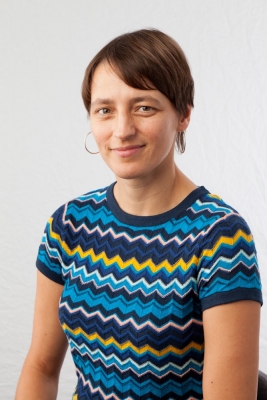
For the past 15 years, Courtney Schumacher has been teaching atmospheric sciences and radar meteorology at Texas A&M University.
The classroom dynamic, she says, makes her reconsider the basics of atmospheric science, bends her mind (as ever) towards critical thinking, and—in the case of her graduate students—magnifies her research productivity.
Schumacher’s investigative specialties include convective storms, the radar systems used to unlock how storms organize, and the synergies of modeling and observation—all the better to investigate how regional storms interact with global patterns of atmospheric circulation.
Her 55 peer-reviewed publications hint at the deep world of her specialties, written in the language of moisture-convection feedbacks, latent heat structures, microwave imagery, mass-flux characteristics, and other mysteries.
Meanwhile, a typical day for the mother of two young daughters will include teaching (or classroom preparation); service work on committees, inside the university and outside; reading, writing, or reviewing papers; her own research and current campaigns, including one with Indonesian meteorologists to improve that country’s system of weather radars; and as much soccer as she can get in.
“I would play every day, if I could,” says Schumacher.
The average these days, however, is once a week.
Math, Storms, and Snake Alerts
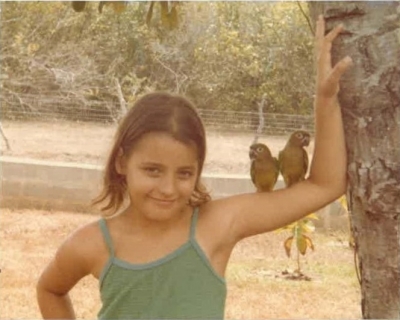
A passion for science has many wellsprings. For Schumacher, one was certainly a backyard in Panama.
She was in second grade when her father, an officer in the U.S. Army, was posted to Fort Clayton near Miraflores Locks on the Panama Canal. Schumacher remembers watching the 70,000-ton, 10-deck Queen Elizabeth 2 glide through the canal with inches to spare.
The family backyard was a patch of jungle. A sloth liked to stop by, and the Army base was subject to frequent snake alerts.
Of course, the storms were all tropical, and Schumacher fell in love with the size and noise of them.
Of her early influence, she says, “There was no snow to be had.”
Years later, as a high school student in northern Virginia, Schumacher discovered a facility for math. But, she says, shortly after she declared mathematics her major at the University of Virginia (BS 1994), “I realized I needed to do something applied.”
Add into that desire three years of girlhood tropical storms, a backyard jungle, and a visiting sloth. From that you get, by Schumacher’s personal calculation, a major in environmental sciences: broadly eclectic, with a nod to history, policy, and the civil impact of environmental matters.
To season the mix, she discovered internships as an undergraduate at the University of Virginia. She was a fire weather technician with the National Weather Service in Fairbanks, Alaska, and in one dramatic instance lived in Brazil for six months—most of it in the Amazon basin—to do an ecology project through the University of Vermont.
Another possible major after math was literature—a way to exercise a lifelong passion for reading, which only cooled later in the face of research demands.
“Reading is important, and not just science papers,” says Schumacher. “Anybody who reads a lot will be a better writer.”
Postcards from South Asia
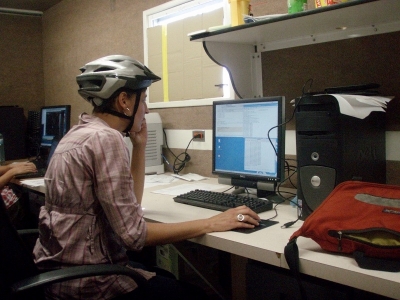
Before graduate school, Schumacher took two years off, traveling and working for non-governmental organizations, mostly in South Asia.
At one point she found herself in Kathmandu, Nepal, deep into an agro-forestry project, when she met a fellow American, Ward Hindman, now professor emeritus at the City College of New York. He was then doing research at Tribhuvan University, using small instruments to study cloud condensation nuclei. Schumacher pitched in.
Before traveling to South Asia, she had applied to do graduate work in atmospheric sciences at the University of Washington with Robert Houze Jr., an expert in the physics and dynamics of clouds.
Schumacher wrote Houze postcards from South Asia and used Hindman’s email account to stay in touch. In 1996, she became Houze’s graduate student. (Schumacher went on to earn her MS in 2000, and her PhD in 2003.)
The time off from school had done her a lot of good.
“I wasn’t burned out,” says Schumacher, who to this day tells her students to “be proactive about getting experiences.”
And though she had to catch up on some atmospheric science fundamentals, she was glad for her eclectic environment sciences degree.
“It gave me a totally different perspective,” says Schumacher. “It made me think more broadly about things.”
Deep into the Tropics
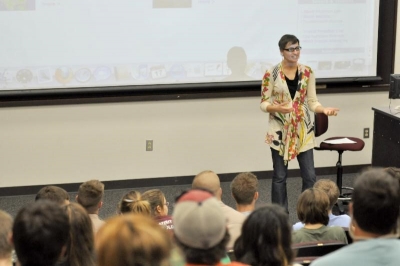
In 1997, Schumacher was still in graduate school when she discovered what became a long, active interest in field campaigns.
She has worked on observational research for the National Oceanic and Atmospheric Administration (NOAA), the National Aeronautics and Space Administration (NASA), the National Science Foundation (NSF), and the U.S. Department of Energy (DOE), often by way of that agency’s Atmospheric Radiation Measurement (ARM) user facility.
Her first field work came in the late summer of 1997 during a segment of NOAA’s Tropical Eastern Pacific Process Study (TEPPS).
Led by Houze, it involved a research cruise on NOAA’s Ronald H. Brown in the eastern tropical Pacific to gather data on the structure of clouds and precipitating storms.
TEPPS and its target (tropical rainfall), as well as its gear (a scanning C-band Doppler radar paired with satellite data and radiosondes) set the stage for what are still Schumacher’s main research interests.
In 1999, she was one of 200 scientists who took part in NASA’s two-month Kwajalein Experiment (KWAJEX) on a remote atoll, Kwajalein, in the Marshall Islands. It was part of a long-time NASA effort to understand tropical rainfall better, to improve forecasting in the region, and to ground-validate its own satellite storm data.
KWAJEX helped inform the agency’s satellite-based Tropical Rainfall Measuring Mission (TRMM). Both the atoll and TRMM were landmarks for Schumacher since they were at the heart of her first peer-reviewed paper, with Houze, in 2000.
She joined Texas A&M as an assistant professor in 2003, and soon after wrote a proposal to participate in the Tropical Warm Pool-International Cloud Experiment (TWP-ICE) in the Tiwi Islands near Darwin, Australia in early 2006. The mission was to study convective clouds and their variability during the Australian monsoon.
“TWP-ICE was the first time I had interacted with the DOE ARM community and I had a lot of instruments and acronyms to learn about,” says Schumacher. “I have been a die-hard user of ARM data since and an active investigator in the ARM/Atmospheric System Research community.”
She adds, “Tiwi storms and crocodiles were pretty cool too.”
During a 2011 to 2012 NSF-DOE field campaign on Addu Atoll in the Maldives, Schumacher settled in for three months of radar work, rented a local house for her family, and biked the few kilometers between the main radar sites.
The NSF part of the Japan-led international effort on intraseasonal variability was Dynamics of the Madden-Julian Oscillation (DYNAMO), which set out to document how tropical storms move eastward along the equator.
In that same timeframe and locale, and with the same science mission in hand, Schumacher was part of the ARM Madden-Julian Oscillation Investigation Experiment (AMIE).
By 2014, Schumacher was back in Brazil, where she had lived for six months as an undergraduate, to be part of ARM’s Green Ocean Amazon (GoAmazon2014/15) field campaign to study the interaction among aerosols, clouds, and precipitation in the rainforest.
‘Letting My Community Know’
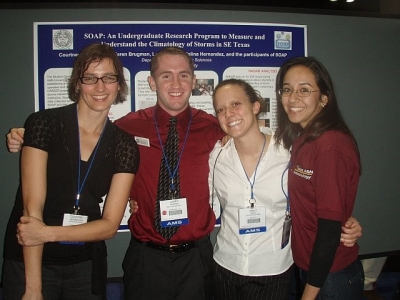
It is radar field work from campaigns such as TWP-ICE, AMIE, and GoAmazon2014/15 that Schumacher brings to the table as a member of ARM’s User Executive Committee (UEC). And much more, of course.
“I was nominated for the radar side of things,” she says. However, the UEC is also “a way of letting my community know” what ARM is up to with radar data and emplacements.
At ARM’s fixed sites alone, says Schumacher, “there is such rich data to be used.”
The UEC also gives her a forum for providing feedback to ARM from the radar community on what data products are needed, and on different code protocols that might help.
Helping in other ways is part of Schumacher’s future—beyond even the young students she likes to inspire in the classroom and bring along as researchers.
For one, Schumacher envisions a long-term relationship with her new friends at the Indonesian Agency for Meteorology, Climatology and Geophysics. They are her collaborators during the 2017̅ to 2020 Years of the Maritime Continent (YMC), a multi-agency international project.
More, she envisions a near future when a trend she sees now in atmospheric science moves even faster: more interdisciplinary research.
Schumacher once helped a Texas A&M biologist design a radar scheme to study a colony of bats on campus. But that was a minor note in more formal collaborations she is working on now with experts in statistics, mathematics, isotopes, and public health.
Schumacher pauses to voice the scientist’s lament.
“There are so many cool things going on,” she says. “I say ‘no’ a lot.”
Keep up with the Atmospheric Observer
Updates on ARM news, events, and opportunities delivered to your inbox
ARM User Profile
ARM welcomes users from all institutions and nations. A free ARM user account is needed to access ARM data.


















